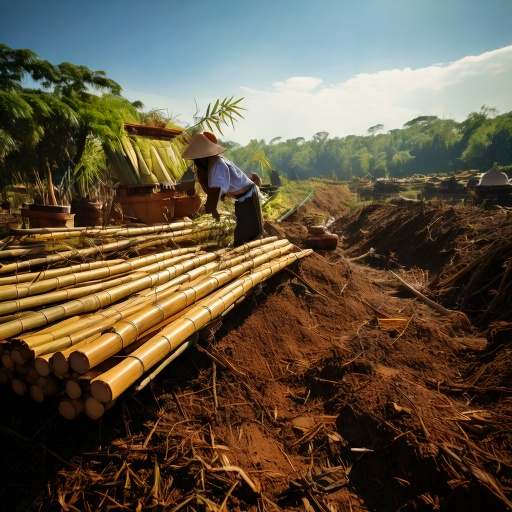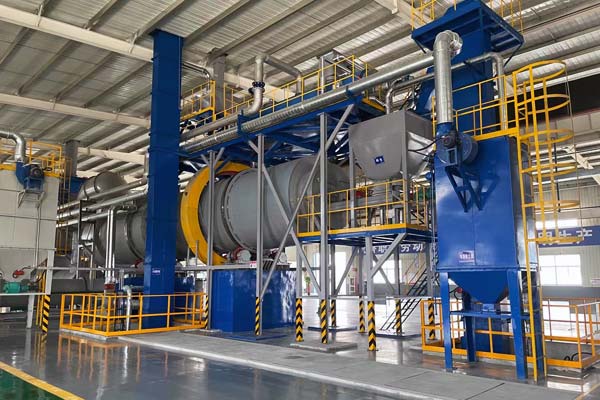Activated Carbon Production: The Premium, High-Margin End Product
Activated Carbon (AC) is a premium, high-demand industrial product derived directly from the Biochar generated in the Carbonization unit. This process is the capstone of the Biomass & Energy Pillar, transforming low-cost agricultural residue into an internationally traded, high-specification material.
Its production adds a powerful, high-margin revenue stream to the Ecoladang ecosystem, driving revenue for Pillar 5 (Business & Administration) that is entirely independent of agricultural commodity markets.
Its production adds a powerful, high-margin revenue stream to the Ecoladang ecosystem, driving revenue for Pillar 5 (Business & Administration) that is entirely independent of agricultural commodity markets.
1. The Activation Process: Maximizing Surface Area
Activated Carbon is essentially Biochar that has been treated to vastly increase its internal surface area, making it an exceptional adsorbent. This surface area, often measured in hundreds of square meters per single gram, is the key to its commercial value.
Step 1: Biochar Feedstock
The low-cost, fixed-carbon Biochar produced during slow pyrolysis (Carbonization) is the required base material. The quality of this Biochar directly impacts the final quality and market price of the Activated Carbon.
Step 2: The Activation Method
The Ecoladang system utilizes specialized reactors to achieve activation through two primary, precise methods:
- Physical Activation (Thermal): The Biochar is exposed to oxidizing gases (typically steam or carbon dioxide) at extremely high temperatures (up to 1000C). This controlled heating burns away volatile compounds, creating vast networks of internal pores, which is ideal for food and medical-grade AC.
- Chemical Activation:The Biochar is impregnated with chemical agents (such as phosphoric acid or zinc chloride) before or during the carbonization process. This method requires less energy and is often used for high-volume industrial AC destined for gas filtration.
The Result: A Superior Adsorbent
The resulting Activated Carbon is highly porous, lightweight, and electrically neutral, making it highly effective at binding and removing impurities—from industrial pollutants and chemical compounds to odors and tastes in water.

The Ecoladang system leverages the following modes based on strategic goals:
The production of Activated Carbon provides immediate and significant commercial value for the franchise, creating a non-agricultural revenue stream tied directly to global industrial demand.
- Global Water Filtration:The single largest market. AC is used extensively worldwide to remove impurities, pesticides, odors, and tastes from municipal drinking water and industrial wastewater.
- Air Purification & HVAC:Essential in industrial and commercial HVAC systems, gas masks, and clean room environments to trap Volatile Organic Compounds (VOCs), ozone, and toxic fumes.
- Industrial Processes: Critical material in chemical manufacturing, pharmaceutical purification, and specialized metal recovery processes, notably gold recovery in mining operations.
- Energy Storage:Next-generation AC is increasingly being researched and used as a core component in supercapacitors and specialized battery electrode materials due to its high conductivity and surface area.

The Activated Carbon unit confirms the strategic genius of the Ecoladang circular economy model: the ability to maximize revenue from agricultural waste.
Maximized Asset Value
Upgrades a low-cost byproduct (Biochar) into a high-specification, premium industrial commodity with superior margins. - Achieves the highest possible revenue per unit of agricultural waste processed, significantly boosting overall franchise profitability.
Market Diversification
Creates a reliable revenue channel that is entirely independent of the performance of the agricultural (Pillar 3) or energy (Pillar 1) markets. - Shields the franchise from local market volatility, ensuring a strong, stable source of cash flow tied to global industrial demand.
Sustainable Sourcing
Our AC is produced from verified, renewable biomass, giving our product a significant competitive advantage over AC sourced from fossil fuels (like coal or peat) in markets driven by ESG and sustainability mandates. - Attracts premium, environmentally conscious industrial buyers, securing long-term, high-value supply contracts.
Internal Filtration Loop
The AC produced can be used within the farm unit itself (e.g., advanced filtration for Aquaculture or Hydroponics systems). - Provides a guaranteed source of high-purity filtration material, reducing operational input costs for the micro-farms.
Core Infrastructure
The entire gasification unit is integrated with the PCDS (Pillar 2) where the AI models and software services optimize feedstock rates, gas quality, and power output in real-time. This digital integration maximizes fuel conversion efficiency and ensures stable 400V power delivery precisely when and where it is needed.
The next stage in this pillar, Biomass Carbonization, takes the solid output from this process and turns it into our first high-value commercial and agricultural product. Do you want to review and expand that page next?